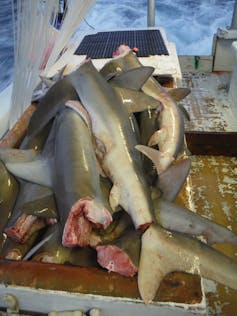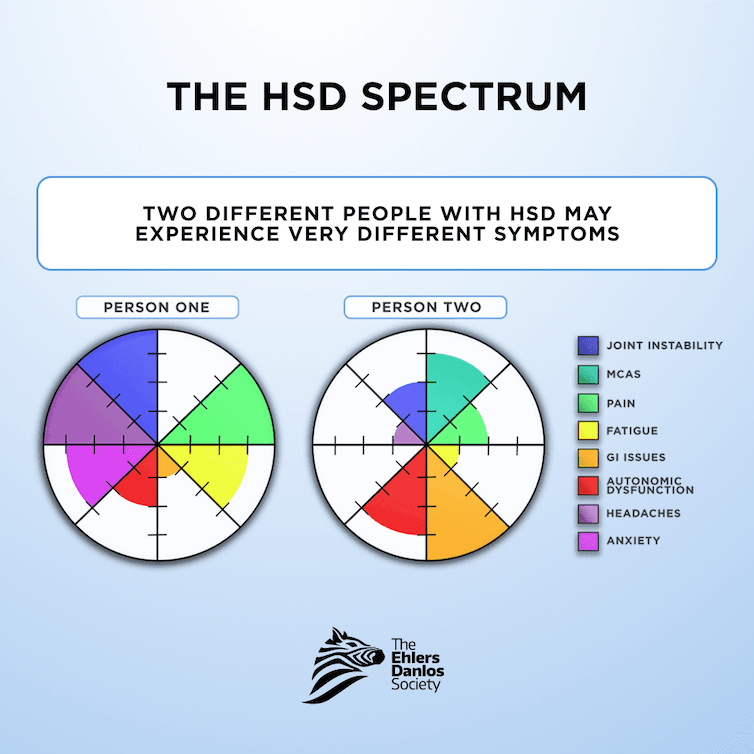The oceans remain vast and inscrutable. While technology has revolutionized our capacity to track threats to biodiversity on land, our understanding of the status of marine biodiversity remains fragmented and biased toward economically high-valued species.
Most fish species are not scientifically monitored, which is done by collecting and analyzing population data. Global marine fish catches continue to be underestimated, with as much as one-third missing.
The fast decline of shark and ray species globally is representative of many other exploited marine species that lack scientific monitoring and a general political will for fisheries management.
Seventy-one per cent of oceanic shark and ray populations have been depleted in the last half-century and one-third of all 1,199 shark and ray species are now threatened with extinction, based on the International Union for Conservation of Nature (IUCN) criteria, primarily due to overfishing. These species have a key role in marine ecosystem functioning and human food security.
Fortunately, there are signs of hope. New scientific techniques and recent efforts of the scientific community have helped create a more comprehensive picture of the speed and scale of these changes, highlighting successful cases of protection and management efforts, including those in Australia, New Zealand, the United States, Canada and the European Union.
Coastal sharks and rays missing in some areas, thrive in others
In 2019, our team of experts carried out IUCN Red List assessments in the Bahamas to determine the global extinction risk status of several sharks and rays.
We found ourselves attempting to reconcile widely divergent views of the regional status of species that were more common in the northwest Atlantic and rare or near absent in the southwest Atlantic.
To understand the reasons for this difference, we gathered data on population status of all 26 coastal sharks and rays — ranging from north to south — across the western Atlantic Ocean, examining the factors like fishing pressure and management effort that could influence the extinction risk status of these species.
We found that populations of the same species had collapsed in the southwest Atlantic due to unrestrained fishing. Across the whole region, we saw that although fishing pressure increased extinction risk, the strength of management engagement was widely overlooked, despite it reducing the extinction risk of all 26 wide-ranging sharks and rays.
The bonnethead shark species (Sphyrna tiburo) is an excellent example of what is happening in the Western Atlantic region. The species is abundantly found in the northern part of its range. But further south, it hasn’t been seen in decades.
(Shutterstock)
So, why is this happening?
In the United States, this shark species is managed by catch quota, while in Mexico there is a seasonal fishery quota. The Bahamas has been dubbed a ‘shark sanctuary’ because of their ban on commercial shark fishing.
Further south, there is no discernible management and this species is captured in unregulated targeted fisheries and as retained incidental catch. Down south, this species is likely subject to heavy unmanaged fishing pressure in most countries. It is very rarely found in Colombia and has collapsed in Brazil where there are very few recent records.
A road map for shark recovery
The U.S. Fishery Management Plan for Sharks of the Atlantic Ocean was implemented by the National Oceanic and Atmospheric Administration in 1993.
This plan was developed in response to the intense expansion of commercial and recreational fisheries in the 1970s to 1980s due to the increased global demand for shark meat, fins and cartilage as well as the concerns about their effects on shark populations.
We found that populations in the northwest Atlantic recovered shortly after the implementation of this management plan.

(NOAA Fisheries), Author provided
Thirty years after this implementation, we found the stabilization of three populations. We also documented the rebuilding population of six of the 11 coastal sharks here.
We believe that this success can be attributed to:
-
A strong regulation system where catch is prohibited for some species (or group of species) and limited for others. A system that improves catch reporting and reduces the pressure of fishing through the reduction of the number of shark-directed fishing permits.
-
strict enforcement by the U.S. Coast Guard and law enforcement agencies for fishers in U.S. waters
-
continuous monitoring of the fishery for data collection
Recovering species population through collaboration
Our research found that halting and reversing declines and creating sustainable fisheries is possible even for wide-ranging sharks and rays.
But this requires strong governance and management.
Concerted efforts can bridge the spots of successful management and recovery with adjacent nations where the species are still in decline, leading to success at a global scale. This approach will ensure that successful conservation in one country is not undone by less regulated fishing areas outside those borders.
Developed nations, that are bringing their fisheries into sustainability and importing more fish, should translate their successes into capacity-building lessons to support other nations undergoing the transition towards sustainability.




